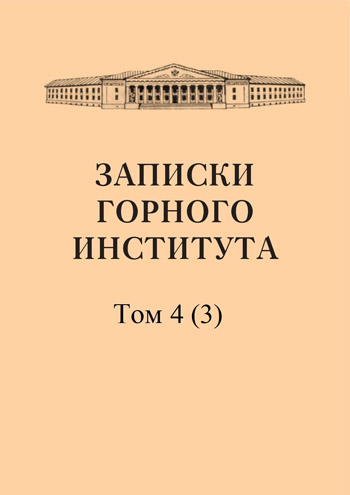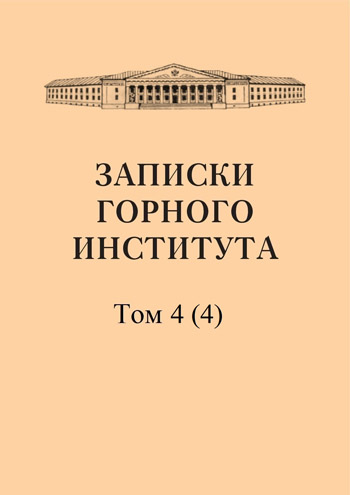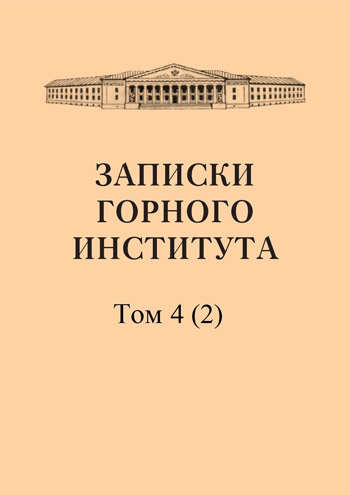-
Date submitted1912-12-22
-
Date accepted1913-02-15
-
Date published1913-04-13
Pseudochroism in twin calcite plates
- Authors:
- V. V. Nikitin
The category of pseudochroism phenomenon also includes the well-known, frequently observed phenomenon of coloring of twin plates growing through calcite grains along the planes of the first obtuse rhombohedron (1012). In this case, the phenomenon of pseudochroism is often very bright for this reason, and also because the position of the twin plates is here easily defined, the phenomenon can be more easily subjected to research. This work represents an attempt at such a study. The application of a “universal” method to the study greatly enriches the picture of the phenomenon and allows us to answer some of the questions it raises. Therefore, I decide to publish the results obtained despite the awareness of the incompleteness of the coverage of the issue.
-
Date submitted1912-11-28
-
Date accepted1913-01-21
-
Date published1913-04-13
On the accumulation of errors in surveying mining sites
- Authors:
- I. M. Bakhurin
The question of the accumulation of errors in a mining site of arbitrary shape leads to the consideration of complex formulas that do not make it possible to draw any general conclusions or give general rules for solving the issue in various practical cases. The possibility of simplification begins from the moment when we attribute some kind of pattern to the broken line. In ordinary mining polygons, such simple regularity of a broken line is absent; straight elongated polygons are quite rare, and the above-mentioned regular broken line is even rarer. At the same time, it cannot be said that there was no regularity in the form of ordinary mining sites, at least in the coal mines of the south of Russia, which we mainly mean in all further discussion.
-
Date submitted1912-10-22
-
Date accepted1913-01-19
-
Date published1913-04-13
On the optical study of minerals in convergent polarized light
- Authors:
- A. N. Zavaritskii
This article proposes an attempt to deduce the main principles underlying the use of converging light, based on the basics of the theodolite method. This particular path is the most appropriate if you follow the requirement to go from simpler to more complex. As will be seen from what follows, the logical development in this the direction of the main provisions of the theodolite method leads to almost the same ideas from which Becke proceeded when explaining the phenomena detected by a crystal in converging light. In addition to some theoretical interest that the presentation of these techniques may have, based on the ideas underlying the theodolite method, it seemed to me useful for the purpose of comparatively assessing the limits of application of each of these two different methods of research (see article).
-
Date submitted1912-08-28
-
Date accepted1912-12-17
-
Date published1913-04-13
On the hardness and microstructure of alloys of telluride and sulfur compounds
- Authors:
- P. Ya. Saldau
The main obstacle to the development of the research of hardness was and is the fact that there is no confidence in the accuracy of the results obtained, since in different conditions for the same substance the results can be different and thus the possibility of comparing results obtained in different ways will be lost. The article describes lead-tellurium alloys, the process of their preparation and research methods. See the results in the article.
-
Date submitted1912-09-17
-
Date accepted1913-11-29
-
Date published1913-04-13
Contractive vectorial energy of volume and surface and thermal state of substances
- Authors:
- P. P. Von-Weymarn
In this short message I will limit myself to presenting some initial provisions and the main conclusions of my work (see article). When considering the thermal state of a piece of solid matter (for example, a piece of gold), it is therefore necessary to take into account three surfaces: 1. An outer surface that separates a piece of solid matter from the surrounding space. 2. The inner surface of contact of the crystal grains that make up the piece. 3. The total, internal dynamic (pulsating) surface of crystalline grains.
-
Date submitted1912-09-24
-
Date accepted1913-01-09
-
Date published1913-04-13
A simple and quick way to demonstrate the general law of crystallization
- Authors:
- E. S. Fedorov
The general law discussed here is that a crystal falling out of solution tends to take on the smallest surface area. This law, which has a simple and well-known theoretical basis, is usually demonstrated by examples of crystallization, or rather recrystallization, which requires a long time, even months, or at least days. I have come across a preparation in which this demonstration can last for several seconds. This drug is sodium nitrate, microscopic crystals of which dissolve from breathing in a few seconds and crystallize at approximately the same time due to evaporation. Thanks to this speed, of course, the mentioned law сan be also quickly demonstrated.


